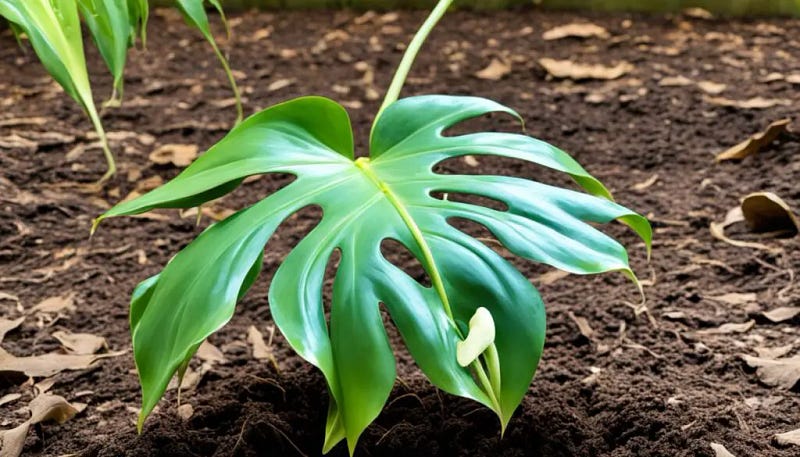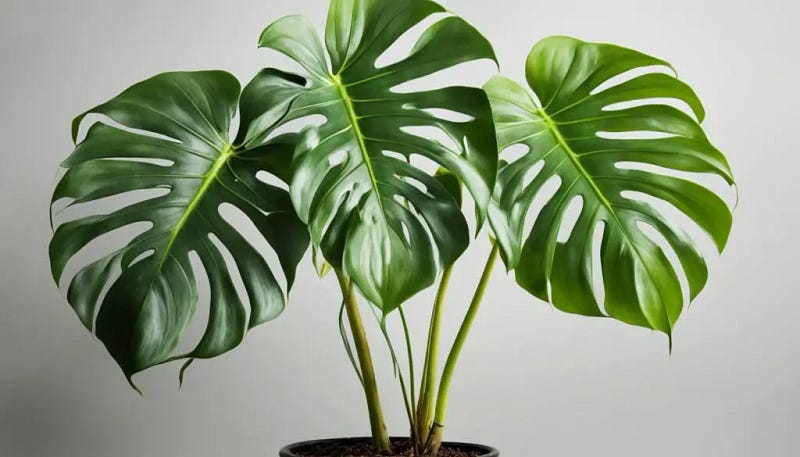
Have you noticed your Monstera plant showing signs of root rot? With their unique Swiss cheese-like leaves, these plants can easily get a fungal disease. It’s important to know the main signs of root rot. Being able to spot these symptoms early can save your Monstera. In this guide, we will go over the 11 signs of monstera root rot. This knowledge will help you catch and fix the issue in time.
What is Monstera Root Rot?
Monstera root rot is a severe fungal disease that affects houseplants. It happens when the soil is too wet, from too much water or bad drainage. This leads to less oxygen for the roots, allowing fungus to spread. The plant’s health declines, and it could die without treatment.
Causes and Consequences of Root Rot
Root rot often kills houseplants. Overly wet soil is the main culprit, and Monsteras are at risk because they don’t like wet feet. With no oxygen, the roots start to rot. Signs include yellow leaves, mushy stems, and wilting plants, and they might grow slowly or not at all.
The Role of Soil Moisture and Drainage
To prevent Monstera root rot, focus on soil moisture and drainage. Too much water promotes root rot, and it could attract pests like fungus gnats. Use well-draining soil and pots with big holes to avoid waterlogging and its consequences.
“Ensuring that the top 2 inches of soil are dry before watering can help prevent root rot in monsteras.”
Signs of Leaf Discoloration
One of the first signs of monstera root rot is yellowing leaves. This happens when the roots cannot get enough water and nutrients because of the rot. As a result, the plant’s leaves turn yellow. This yellowing often means the plant is stressed, maybe from too much water.
It’s important to figure out if root rot is the real cause of the yellow leaves. Look at the plant’s overall health and watch for changes. This can help find the right treatment for the leaf discoloration.
Yellowing Leaves: A Symptom of Stress
Yellow leaves show a plant is stressed, especially with monstera plants and root rot. If the roots are rotting, they can’t take in water and nutrients. Then, the leaves start to turn yellow. This means the plant is having a hard time staying healthy.
Acting fast to treat root rot is key to stopping its spread and making the monstera green again. By finding and fixing what’s causing the leaf discoloration, growers can help their monstera plants recover.

“Yellowing leaves are one of the earliest indicators of root rot in monstera plants, signaling that the roots are struggling to perform their vital functions.”
Soft and Mushy Stems
One top sign that your monstera has root rot is soft, mushy stems. Normally, monstera stems are thick and strong. But with root rot, the stems by the soil become soft and waterlogged. This makes them unable to hold up the plant’s leaves well, making your plant look sickly.
Monstera stem rot, a fungal disease, is also part of the problem. It starts in the roots and moves up, attacking stems and leaves. If not stopped, it can kill the plant. It’s best to prevent this by early detection, which improves your chance of saving the plant.
Poor soil drainage and overwatering are the big issues here. Too much water in the soil leads to root rot. This means you not only need to water right but also need a soil that drains well. The type of soil matters too, affecting how much air the roots get and their overall health.
If your monstera’s stems are soft and mushy, it’s time to act against root rot. Acting early is crucial. It stops the rot from spreading and gives your plant a better chance of recovering.

Dealing with the main problem, like too much water, is key for your monstera’s future health. Give it the right care, and you can beat these challenges, keeping your plant healthy.
Wilting and Drooping Leaves
Is your Monstera’s root system battling root rot? If so, the leaves will show it by starting to wilt and droop.
This happens because the roots can’t move water and nutrients up to the plant. As a result, the plant loses its shape and the leaves begin to sag.
Loss of Plant Structure
When root rot hits, Monstera leaves will droop and wilt, showing the plant is in trouble. The leaves might look limp and even cause the plant’s form to change.
This change comes from the roots not being able to support the plant like they should.
Problems like not enough water, too much water, poor drainage, or unbalanced nutrients can lead to root rot. Even temperature changes can be a factor. Solving these problems early on is key to getting your Monstera back to good health.

“Wilting leaves are a clear sign that something is amiss with your Monstera’s root system. Prompt action is required to identify and address the underlying cause to prevent further decline.”
Watching for early signs of wilting and drooping leaves is crucial. It allows you to tackle root rot before it’s too late.
Use good drainage, keep the soil airy, and regularly check the moisture level to keep root rot at bay in your Monstera.
Conclusion
Monstera root rot is a tricky problem for plant lovers. Yet, you can spot and fix this disease with the right information and care. Knowing the 11 signs of root rot helps. Look out for leaf color change, soft stems, and too much moisture in the soil. Tackling this early with good care, soil, and a proper pot can save your monstera plant. This info is key to healthy monstera plants and avoiding common monstera care tips, houseplant health, and plant disease prevention problems.







